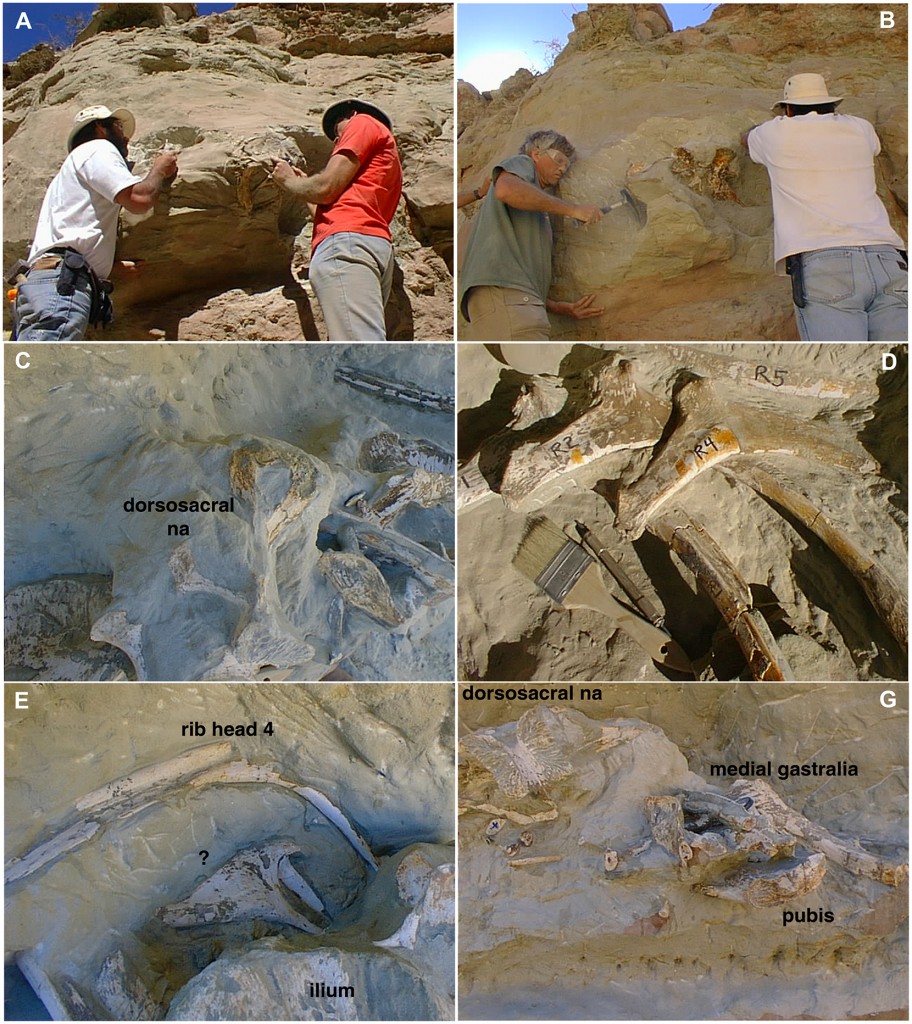A dinosaur fossil discovered in Argentina represents a new species of theropod dinosaur, but is it truly a megaraptor? The age-old debate now resumes, thanks to a study published in PLoS One on July 20.
The skull, axial skeleton, pelvis and tibia of the Murusraptor barrosaensis have been recovered and pieced together.
 “Other characteristic features of Murusraptor barrosaensis include a large mandibular fenestra, distal ends of caudal neural spines laterally thickened into lateral knob-like processes, short ischia distally flattened and slightly expanded dorsoventrally,” the study authors wrote in their report. “Murusraptor belongs to a Patagonian radiation of megaraptorids together with Aerosteon, Megaraptor and Orkoraptor.”
“Other characteristic features of Murusraptor barrosaensis include a large mandibular fenestra, distal ends of caudal neural spines laterally thickened into lateral knob-like processes, short ischia distally flattened and slightly expanded dorsoventrally,” the study authors wrote in their report. “Murusraptor belongs to a Patagonian radiation of megaraptorids together with Aerosteon, Megaraptor and Orkoraptor.”
Lead authors Philip Currie and Rodolfo Coria also state that the dinosaur was immature at the time of its death, yet it is larger than other specimens of megaraptor (hence, the name, Murusraptor). So could it still qualify as a megaraptor?
The ‘Definition’ of a Megaraptor
Currie and Coria can agree that their newly discovered dinosaur belongs to a group of mid-sized carnivores, some of which have large claws. However, it’s up for debate as to whether or not it’s a definitive megaraptor.
At the moment, there is much discussion over how megaraptors evolved, as well as their actual lineage. Some believe that they are most closely related to allosaurs, which were carnivores with teeth designed for slicing teeth. Others believe that megaraptors are specifically descendants of tyrannosaurs.
“These contentious phylogenetic hypotheses on both sides of the allosauroid-coelurosaur dichotomy are far from resolution, as it has been recognized in the most recent contributions,” wrote Currie and Coria in their report.
In any case, both researchers conclude that their findings have provided significance in terms of understanding the anatomy of similar dinosaurs.
“Although the goal of this contribution is not the reexamination of the phylogenetic relationships of the megaraptorids, the specimen MCF-PVPH-411 of Murusraptor yields an important amount of new anatomical information that can be useful for future and deeper phylogenetical treatment of the clade,” Currie and Coria conclude.
And isn’t that all we can ask for when we look back on the past?
Sources
Currie, Philip. Coria, Rodolfo. “A New Megaraptoran Dinosaur (Dinosauria, Theropoda, Megaraptoridae) from the Late Cretaceous of Patagonia.” PLoS One. Published July 20, 2016.
Switek, Brian. “Newly discovered dinosaur joins a mysterious family of ‘giant thieves.’ Washington Post. Published July 21, 2016.
